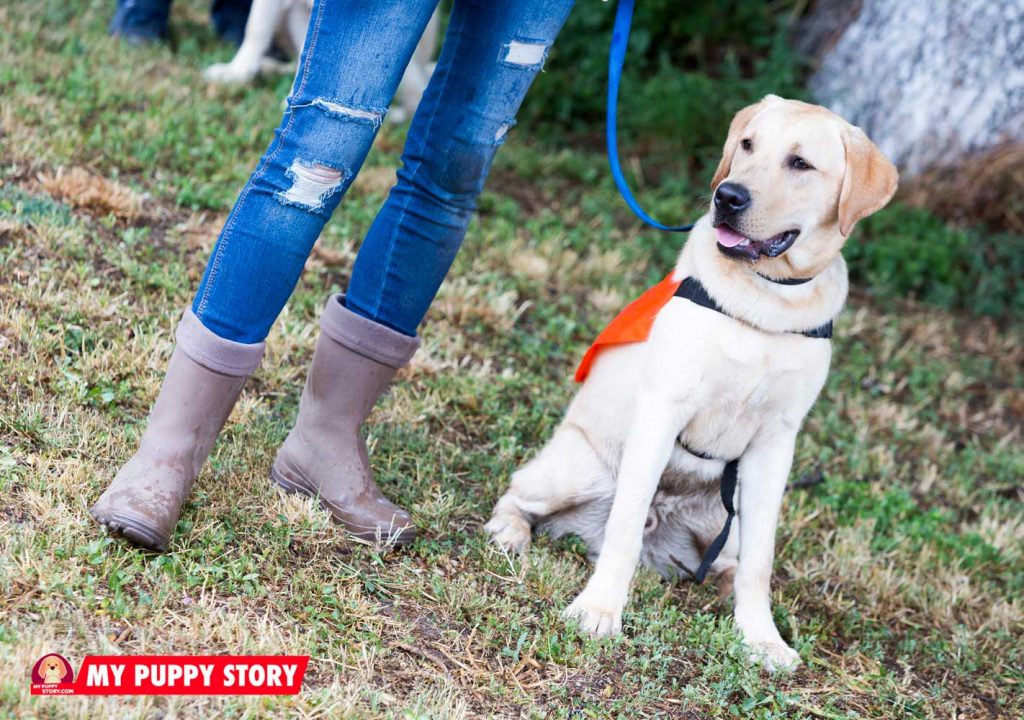
Teaching your dog how to stay is one of the essential commands that you should teach. It's one of the first instructions to teach a dog, and it comes handy in a lot of situations such as when you have guests over and you don't want your dog all over them or when you're carrying something your dog shouldn't be around.
It might seem like a lot of work and can take quite a lot of your time, but it is quite achievable if you work hard and are persistent about it. There are a number of steps that you have to follow in order to train your dog how to stay successfully. Let us go through them!
The first step is to make sure that you are in the mood for a training session. You should be feeling well and fresh for a session like this one as it requires a lot of patience. If you're busy or have a number of things on your mind, it won't work.
Another situation in which it probably won't work is if your dog is young. In that case, it will be disobedient. This could result in you getting annoyed, which will change the mood of the session to a negative one.
Ask your dog to stay in the position you want it to stay in with the command you want. This can be stay, sit, sit down or any other command you prefer. If your dog obeys and remains in the desired position for around a couple of seconds, then give it a treat.
In the beginning, you are supposed to treat it even if it stays for just 1 second in that position. After you are done treating, it is allowed to move, so it's okay if your dog changes its position after that.
When you beckon your dog to stay, you are supposed to make eye contact. Show it your palm, make constant eye contact, and start backing from it slowly. If you are a considerable amount of distance from it and it is still in that position, reward it with a treat.
Before doing this, say OK or any other word which allows your dog to be released from its position. After that, you can either go up to your dog to give it its reward or wave at it to come to you.
You are to repeat this exercise until your dog has perfected it. The only difference you are to make is to increase the distance or decrease it. If your dog breaks the cycle and comes to you before you release it, do NOT give it its treat; simply repeat the cycle.
Another step that you can include in this training is to introduce distractions. You can do this by asking people to walk by your dog when you are in the middle of training. It would be great if these people carry with them some sort of an object of distraction. This could be a ball they could be tossing or any other object that could be hard to avoid for the dog. If your dog stays put, reward it with a treat.
If you notice that your dog has moved or is trying to move during the time you have asked it to stay, raise one of your hands right above its head. You can do this with its leash as well. Let it stay there for a little while before bringing it down and then put your hand back to its original position.
You do not have to repeat your command right now. Count to 30 and go back to your dog. You are to keep your body completely straight during this process and make sure you are not leaning over your dog. Right before you are moving away from it, make sure your hands are by your side again.
Another important point to make sure is to always end the sessions on a good note. If you and your dog end up frustrated and annoyed at each other, it can never learn. Make sure both of you are happy and still friendly or playful with each other.
If your dog has still not learned how to stay, end your session with another instruction or command which your dog already knows such as sit. Try to slowly move away from your dog, and increase the distance a bit every day.
In the beginning, try to stay in the same room. After a few days, you can leave the room as well. Try this command out when your dog is either standing or lying down. If your session is successful, it will not change its position. If you want to try this in an open area such as a garden, make sure the area is well-fenced or surrounded by a boundary.
Try to decrease the number of treats you give it over time. Once your dog gets slightly better at it, you do not need to treat it all the time. However, you can reward it through ways such as praising it verbally.
Another important tip to keep in mind is to make sure your training sessions are evenly spread throughout the week. These sessions must be short and frequent. Having a long session once a week is a bad idea as your dog might forget the instructions. This is why it is not recommended to skip any day.
Teaching your dog how to stay is not a very difficult task if you are persistent about it. You just need to follow the steps with a calm mind and when you have the time.
The stay command is closely linked to the sit command. Therefore, it is necessary that your dog knows how to sit before you teach it how to stay. Once its knows how to do the former, the latter isn't difficult at all.
